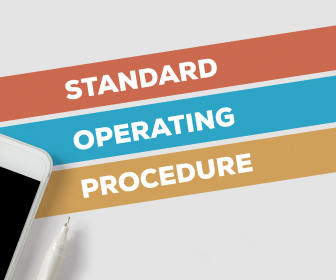You Have to Standardize Your Project Processes
Blog | May 30, 2024

How to get started on your own
By Kayla Cousineau, COO
The key to building any organization that consistently delivers excellence requires a consistent way of executing. Yet, so many growing companies avoid the work required to make this happen. In the world of Market Research, there’s often a sense that every project has a degree of “custom” that makes this impossible. Fortunately, that’s not a barrier to process consistency.
Often, it’s due to the uncertainty of HOW to go about it and what strife it may cause internally.
As a 15-year Operations executive specializing in this discipline, I can share that the process isn’t as scary as you may think.
Here’s a simple framework leaders can use to get this vital growth step kicked off in your business.
Step 1: Designate a lead.
For businesses in a growth phase, often the top executive has enough on their plate already. So, the CEO/Owner does not have to do this themselves. This often is the reason why the effort gets delayed. This process should be a team sport! I do recommend designating a lead/moderator who can start with asking lots of questions of team members on how they do their work best.
Step 2: Define what we do.
Very basic and often pretty simple. Define what you do and for whom. Then you can start transitioning to the internal “how”. Internally, who does what every day? How does it all come together?
Step 3: Document it all.
I use the principle of “React vs. Create”. When I first joined OpinionRoute, I was the perfect person to begin the documentation exercise. I was learning a new space and took the first stab at writing “the OR Way” down. In the eyes of the team, my overview was totally wrong, missing many key steps in the process. But it began the conversation and soon my team came together to react to something that jump started documentation. The team’s participation in the process helped us take huge strides toward alignment quickly.
Step 4: Deep Dive on the Disagreements.
Too often teams try to avoid conflict. I believe great companies have healthy debates. Put everything on the table! This can only lead to deeper understanding for everyone involved.
When a process is being documented, there will inevitably be steps that reveal misalignment on the “right way” to do something. You may hear “Well, that’s not how I do it and I have no issues.” Or you’ll face resistance to standardizing. You’ll sense the resistance when process questions are answered with “It depends.”
Remember- this isn’t about someone being right or wrong, it’s about the company being consistent in doing things in a high-quality way. Let’s scenario plan so we can see how this may play out. What does a healthy way to handle a disagreement look like?
When disagreements surface, I pull everyone together in one room (virtual or physical) to go deeper. Here’s what I try to define in that conversation:
What’s not in agreement?
Process order? Entire steps? Who does what?
We then do a group analysis on the pros/cons, making sure everyone is heard. Once everyone has their say, pick a “right way”. Do not leave the room until there’s agreement. Even if someone doesn’t fully get their way, they must buy in to what was just created. This will be an immersive learning experience for everyone.
Then you can finalize the documented process and where these should all be stored.
Step 5: Implementation and Reinforcement
All documentation needs to be accessible in a consistent place. Constantly reference back to it in day-to-day conversations. When a mistake or project issue arises, point back to “how did we agree to handle this in the SOPs?” “Where can I find this documented?”
I follow the Rule of 7. People won’t remember something new until they hear something 7 times.
Here are supplemental things we do over time to keep the standards alive:
- Pulse trainings
- Leadership reinforcement throughout the organization
- Team member engagements to eradicate constant friction to the process.
- Individual growth plans for all team members based on their unique needs, gaps, and interests
- Measurement of what matters in both compliance and process effectiveness.
The best team members will want to know the standard to work toward. But for everyone, it’s a clear set of expectations that they will work towards.
This process unlocks a new phase of growth and high performance for the whole organization. The best part is that it doesn’t have to be painful. It can be a project that brings the whole organization closer together.
Need help getting started with SOPs in your company? Hit us up here and we’ll help with some ideas for free!
